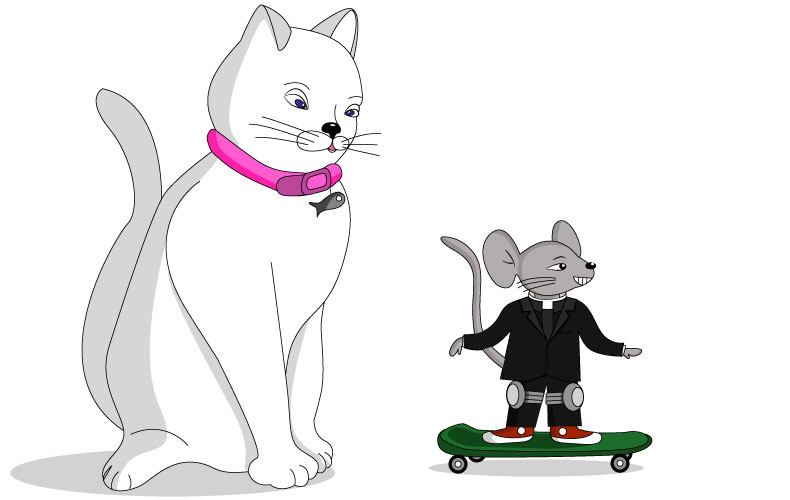Written by: m.wilson
Pet owners often describe being ‘caught off guard’ when their animal companion starts showing signs of serious illness. And it’s a feeling that doesn’t go away, perhaps until the pet owner invests in extensive and very costly (blind) – testing. Since Sheba cannot tell you, for example, that she hasn’t had a bowel movement in three days or why she has stopped eating, precious time, when home treatment may have been effective, is wasted. Furthermore, pets are unable to help themselves by doing things like cutting meat out of their diets or by concocting an herbal poultice. Meanwhile, Sheba probably doesn’t want to be taken to the hospital in the first place and may be so scared of human intervention that it would hasten her condition.
Shop up to 50% off sale items!Older folks, who have cared for several animals over the years may be able to provide insight into a few observable health conditions. However, identifying specific problems, like Hyperthyroidism for example, is far more difficult. Later, when the pet owner pays $100 to test for Hyperthyroidism, and the doctor says they still aren’t quite sure if your pet has Hyperthyroidism, a situation begins to unfold. Cat and dog owners could end paying a minimum of $5,000 for complete testing if their pet should become very ill.
It’s wonderful that people are willing to spend $10,000 or $20,000 to deal with their sick pet, but ethically it puts us in quicksand
Douglas Aspros former president American Veterinary Medical Association
SLATE/FORBES (2014)
Under-Served Populations
The low-priced veterinary clinics in “under-served populations,” most commonly provide preventative care such as vaccination, spay/neuter, and other low-cost services and programs. Unfortunately, these organizations typically don’t assist with $200 chest x-rays – an x-ray that may or may not help see anything related to your pet’s condition (catological.com, 2020), and might only be a gateway into exhaustive testing. Of the 23 million pets who live in homes at or below the poverty line, 80 percent will never visit a veterinarian (Washington Post, 2019).
Trends
In the past, say around 10 years ago, if you took your pet to the vet and it was diagnosed with a serious illness, chances are you would have been advised to have it put down.
The industry is growing every year. Pet care expenditures in the U.S. reached $95.7 billion in 2019, up nearly six billion from 2018, and is expected to increase four or five billion dollars to $99 billion during 2020. In 1994, spending rose from $17 billion to $55.53 billion in 2013. Pet owners increasingly invest in services such as grooming; transportation; hotels; non-traditional pet foods made with healthier, special-order ingredients; diets that include 8 -10 treats per day; and other technological services normally only employed by humans (Forbes, 2018).

67 percent of American households are pet owners, equating to 84.9 million homes. 63.4 million of those households are Dog owners and 42.7 million have Cats. Then freshwater fish 11.5, birds 5.7, small animals 5.4, saltwater fish 1.6, reptiles 4.5, and horses 1.6 (APPA, 2019).

Foster Families Say “How Much?!”
In the article Vets Are Too Expensive And It’s Putting Animals At Risk – Washington Post (2019), Fenton, a longtime animal rescuer, noted the exponential upsurges in vet care pricing over the past decade. He cites the 47 percent increase in surgical vet visits for dogs and the 73 percent increase for cats described in the 2011 APPA report, which nearly doubled consumer expenditure during that period (from 8 billion to 14 billion).
Don’t be caught in the middle of a pricey pet care crisis – learn more about your pet insurance options by getting a free pet insurance quote today!
Vetco
Market research firm Packaged Facts predicts that the pet insurance industry will double by 2022 (Consumer Affairs, 2018).
Every six seconds, a pet owner is asked to pay a vet tab of over $1,000, says Healthy Paws Pet Insurance. However, despite rising rates, Consumer Affairs (2018), reported that only 10 percent of dogs and five percent of cats are covered by medical insurance. It is possible that the numbers are low because many pet insurance companies work on a refund-only basis. The pet owner must pay thousands of dollars out of pocket in good faith that the insurance company will agree with what your veterinarian performed and prescribed. Whoever is working in the office will need to be (on the money) when dealing with these insurance companies.
And so it began. No one ever says to you, ‘You could spend thousands of dollars on this animal and it could die in a few months anyway.’ It doesn’t work like that.
The Globe And Mail, (2015)

